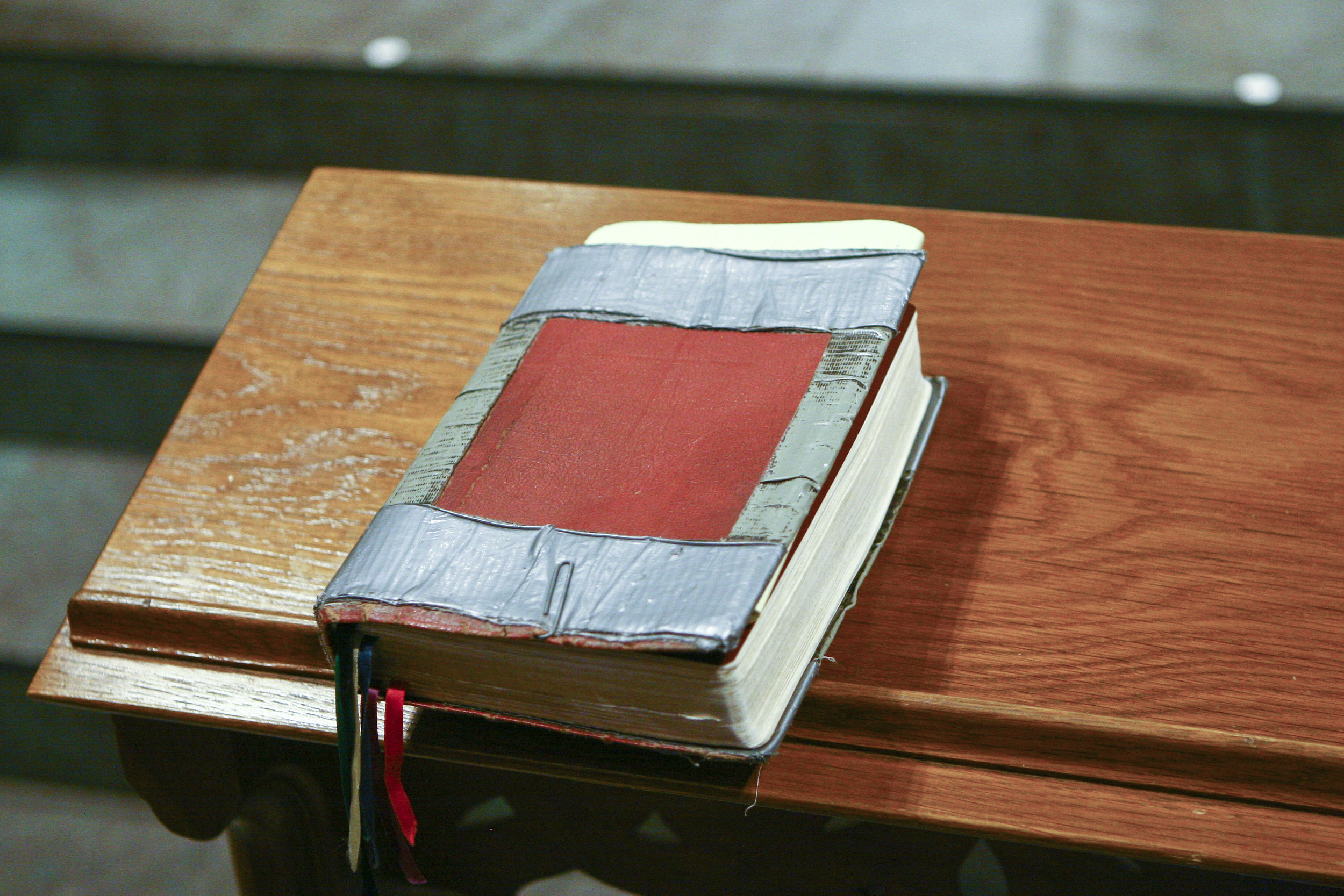The Religious Book as Object: An Interview with Dorina Miller Parmenter
Citation: Mohan, Urmila. “The Religious Book as Object: An Interview with Dorina Miller Parmenter.” First published in Material Religions Blog, 16 Dec. 2015. Republished in The Jugaad Project, 22 Jul. 2019, thejugaadproject.pub/home/the-religious-book-as-object-an-interview-with-dorina-miller-parmenter [date of access]
Dorina Miller Parmenter
Dorina Miller Parmenter is Associate Professor of Religious Studies at Spalding University. She earned her doctorate in Religion from Syracuse University with a dissertation titled “The Iconic Book: The Image of the Christian Bible in Myth and Ritual” in which she emphasized the Christian Bible as a material object rather than a text to be read. While most of Parmenter’s on-going research lies within Christian history, she is also involved in the Iconic Books Project, a cross-cultural and interdisciplinary collaboration with scholars of many different religious traditions who focus on the ritual uses of religious scripture. Parmenter is Vice-President for The Society for Comparative Research on Iconic and Performative Texts (SCRIPT). Her publications include an encyclopedia entry on “Material Scripture” for the The Oxford Encyclopedia for the Bible and Arts (in press), the article “Iconic Books from Below: The Christian Bible and the Discourse of Duct Tape,” and “A Fitting Ceremony: Christian Concerns for Bible Disposal” in the edited volume The Death of Sacred Texts: Ritual Disposal and Renovation of Texts in the World Religions.
UM: How did you get interested in materials and objects in religion?
Relic of the Inquisition (Diary 85) 1995; paper, leather, sterling sliver, enamel, and stones; 5.5 x 5.5 x 1.25 in. Photo courtesy of Dorina Miller Parmenter.
DMP: I was an art major in college, focusing on crafts rather than the so-called fine arts, and then went to graduate school where I studied ceramics and metalsmithing. I finished my degree in art by studying the history and designs of Medieval treasure bindings and creating my own jeweled and enameled covers for books that I bound. When exhibiting the finished products, the queries that I received most from viewers concerned the contents of the books, implying that the texts must be special to warrant such attention on the covers. Upon discovering that the books had blank pages, the disappointed viewers often shared their take-away lesson with me: “Well, I guess you shouldn’t judge a book by its cover.”
After I got over my irritation that people seemed more concerned with the implied but absent text than they were appreciative of the art that I had created, I realized my own take-away lesson: people do judge books by their covers, among other things. The material elements of a book—including its cover, its size, the materials used to make it, where it is kept, how it is used, and so on—send signals about its purpose and value. When I then went to graduate school to study religion, my attention was drawn to the significations of the material elements of religious scripture, which seemed to be overlooked in textual hermeneutics as well as in ritual studies.
I no longer practice book arts, although every now and then I conduct basic bookbinding workshops to invite people to think about the materiality of books or the impact of different ways of presenting writing.
UM: Do you approach ‘religious books’ and ‘texts’ as sacred objects or sacred knowledge?
DMP: My view is that the attribution of ‘sacred’ to books and texts comes from the material practices that surround them as objects more than from the meaning of the words conveyed by the text. My mentor and colleague, James Watts, articulated this well in “The Three Dimensions of Scriptures,” stating that scripture involves the ritualization of three related dimensions of texts: semantic, performative, and iconic. The iconic dimension—the representative and recognizable material form of the text that acts as a signifier separately from the signification of any particular words—is crucial to this formula.
I conduct most of my research in relation to the iconicity of biblical texts, such as an adorned Torah scroll in a synagogue ark, two arched tablets on a granite monument, or the display of a family Bible within the home. As visual objects they might act as symbols of God’s revelation and/or religious history and tradition, as tangible objects engaged in ritual they might be perceived to act as mediators of divine presence, as images and objects manipulated within particular social contexts they might communicate power and legitimacy.
While my initial interest in the iconic dimension of the Christian Bible related to lavishly adorned books, recently I have been studying rituals that demonstrate an opposing sentiment. In some sectors of contemporary American evangelicalism it is common to display heavily used or worn-out Bibles, often held together with duct tape. In this case the iconic dimension signifies the piety of the individual user who is intimately bound up with the book, and reveals how the book acts as a mediator of God’s saving grace that “holds together” not only the book but its owner.
UM: Would you agree that the materiality of religious objects tends to be marginalised in religious studies in favor of scriptural exegesis?
DMP: Fifteen years ago I would have agreed that materiality was marginalized in favor of textual interpretation in religious studies, but I think that a focus on everyday objects has moved more toward the center. This has been furthered by the important and prolific works of David Morgan, S. Brent Plate, Colleen McDannell, and Sally Promley, among others, and the publication of "Material Religion: The Journal of Objects, Art and Belief."
UM: Is there more work to be done in highlighting the importance of religious materiality?
DMP: I don’t think there can be too much emphasis on materiality in the study of religion. In relation to materiality and scripture, I’ll take this chance to promote the organization SCRIPT – The Society for Comparative Research on Iconic and Performative Texts. We have sessions at the AAR/SBL annual meeting as well as at some regional and international conferences, and published the anthology Iconic Books and Texts in 2013. The conversations around SCRIPT are great because they are cross-cultural, and one can think about new ideas by hearing about issues of materiality and scripture in different traditions.











